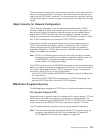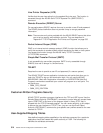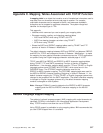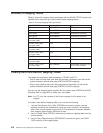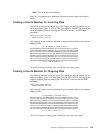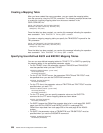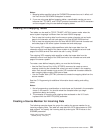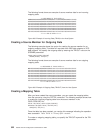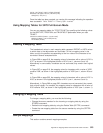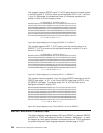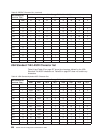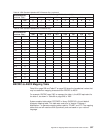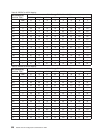
Notes:
1. Mapping tables specified using the CHGSMTPA command are not in effect until
the next time the QSYSWRK subsystem is started.
2. If you are using user-defined mapping tables, unpredictable results can occur
because the FTP, SMTP, and TELNET protocol commands are ASCII characters
and are mapped using the user-defined mapping tables.
Creating 3270 Mapping Tables
Two tables can be used for TCP/IP TELNET’s 3270 full-screen mode: when the
server system language is different from the local AS/400 language.
v One to map the incoming data from the server system character set and code
page to the character set and code page of the local AS/400 5250 terminal.
v One to map the outgoing data from the local AS/400 5250 terminal character set
and code page to the server system character set and code page.
The incoming 3270 mapping table specifies a table that maps data from the
character set and code page of the server system to the character set and code
page of the 5250 terminal from which the user is using TELNET.
The outgoing 3270 mapping table specifies a table that maps data from the
character set and code page of the 5250 terminal to the character set and code
page of the server system.
To create a user-defined mapping table, you must do the following:
v Use the Start Source Entry Utility (STRSEU) command to create a source
member containing the hexadecimal values you want included in the mapping
table. Each source member must contain 512 hexadecimal characters because
each mapping table contains 256 bytes of data.
v Use the Create Table (CRTTBL) command to create the mapping table from the
source member.
See the
CL Programming
for additional information about creating and editing
tables.
Notes:
1. Not all programming considerations or techniques are illustrated in the examples
shown in this section. You should review the example before you begin
application design and coding.
2. The examples of incoming and outgoing data are based on the U.S. basic
keyboard with the KBDTYPE(USB) parameter.
Creating a Source Member for Incoming Data
The following example shows the syntax for creating the source member for an
incoming mapping table. This table will map data from 3270 data streams to 5250
data streams. You specify the incoming data by entering the TBLIN value on the
SRCMBR parameter:
STRSEU SRCFILE(QGPL/QTBLSRC)
SRCMBR(TBLIN) TYPE(TXT)
Appendix C. Mapping Tables Associated with TCP/IP Function 521



